Native Americans’ lives back in the day were hard, as they focused much of their energy to find and preserve food. They grew various crops, and were able to forage for natural growing plants that were good to eat. They were also prolific hunters.
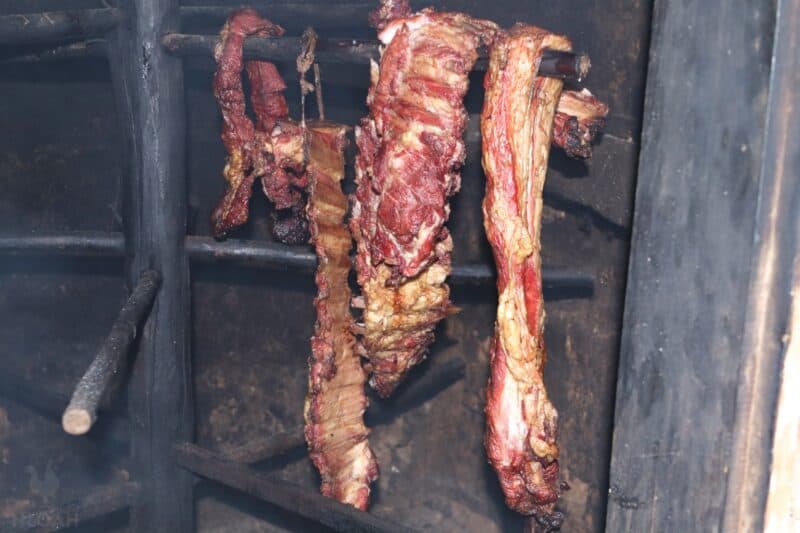
Despite their ability to supply food, it was hard to have enough food throughout the whole year. Crop and wild plants were restricted to their growing season. They had too much at certain times of the year, and not enough at others.
Meat from hunting was not quite as restrictive however, with a buffalo providing them with over 200 pounds of meat it could be difficult to eat it all without any being wasted. For the Native Americans, waste was never an option.
This “feast or famine” situation made it essential for them to be able to preserve food. But, if this is all history, how does this relate to our modern homesteads?
Well, those on modern homesteads also have an abundance of food during the growing season however they also have a restricted supply at other times of the year.
The only way to survive is to use techniques for preserving foods that are based on these traditional methods. We should also note that the remaining Native Americans are still using these techniques today.
Table of Contents:
Sun-Drying
One of the most used techniques used by the Native Americans for preserving food was drying.
Moist food is a breeding ground for enzymes and microorganisms. The drying process reduces the moisture content of the food, and prevents or at least slows down the microbial organisms from spoiling it.
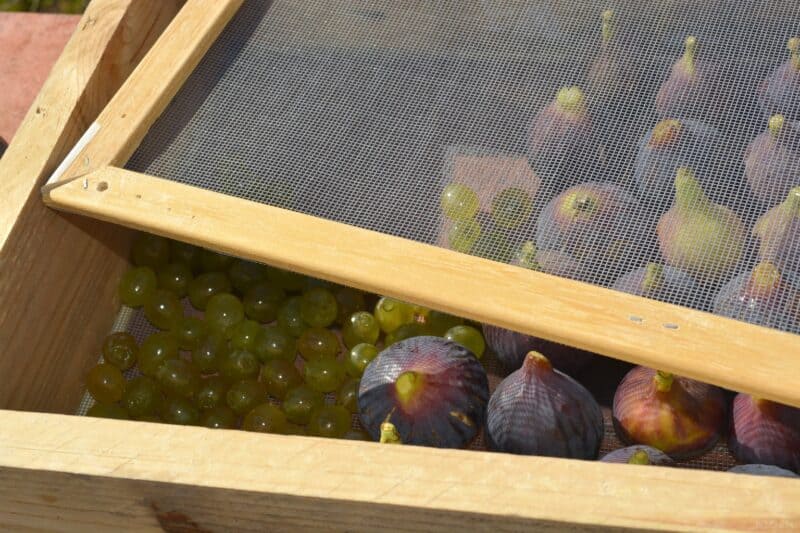
Consequently, drying food will make it edible for a longer time, and has the bonus of reducing its weight while concentrating and intensifying its nutrients and taste.
Countless foods such as fruit, veggies, and meat were dried by the Native Americans using the natural power of the sun.
Meat dried in this way was called charqui by the Native Americans. Today we call it jerky, and it can be found all over the world.
The food was cut into thin strips before placing it on large flat rocks, or hung on racks that were made from twigs. Sometimes, the rocks were heated in a fire before being used to speed up the drying process.
The sun would then dry the food. However, the food did require turning often, and protecting it from insects and animals. Children and older members of the tribe would oversee the drying process.
This process may seem a bit too much for the modern homestead, however, it is possible to put the food into the sun and protect it from insects using other methods rather than the whole family fanning away flies.
The modern homesteader works around this issue by laying the thin strips of food on a ventilated tray covered with glass that is left in the sun.
Pretty much any container, DIY or repurposed that can be covered with glass will work fine. I have seen folks put items on the dashboard of their cars to catch the sun. I think this is a bit restrictive for regular use, but it does work.
For those not wanting to use these old-fashioned techniques, it is possible to buy drying ovens that can make the process easier.
For most food types, 8 hours of sunlight is enough to finish the drying process. However, some vegetables that have a high water content will take longer.
These and countless other foods are good to sundry:
- Squash
- Potatoes
- Onions
- Beans
- Meat
- Fish
- Wild Berries
- Apples
- Strawberries
After the food has been dried, it then needs to be stored correctly to ensure it lasts for as long as possible. Storing in sealed jars in a cool dark environment will keep some of this food edible for approximately one year.
Smoking
Meat and fish were the usual foods that were preserved using smoke by the Native Americans. Any meat is suitable for smoking. Fleshy fish such as salmon or trout are also suitable.
A low, smoky fire would produce the perfect conditions to smoke food. The oils and particles from the wood coated the food while it was being dried, helping create a barrier between the meat and the air.
A bonus would be that the smoke would create an enjoyable taste in the food. A taste that could be altered or enhanced by using different types of wood and herbs.
The food would be cut into long, thin strips, and placed on a rack made from twigs over the fire. Sometimes it would be put into a wooden hut or even a tipi with a fire inside.
This process can, depending on what was being smoked, take between a few hours to a few days to complete.
Many modern-day homesteaders smoke food today.
Any DIY wooden structure with a method of protecting the wood from the fire that can be fitted with racks for the food to be hung from will work. This type of smokehouse is perfect for those that wish to smoke large quantities.
For smaller quantities, it is possible to use an old BBQ that has a lid. The fire needs to be far less intense than when you use it to cook BBQ food.
I use an old baking tray that I line with tin foil. I place a rack over wood shavings that are mixed with different teas and herbs. The food to be smoked is placed on the rack and the complete tray is covered with tin foil.
The baking tray is then placed on a gas cooking range over the lowest flame possible. I often cook chicken and sometimes place a bowl of mashed potato on the tray to create a nice smoky flavor.
The food once smoked still needs to be kept in cool dry conditions for it to last any length of time.
Natural Freezing
Tribes that lived in areas that had regular snow during winter were able to use the sub-zero temperatures to preserve food. Meat was wrapped in animal skins to prevent freezer burn before burying in the snow.
The food would be wrapped in bundles that held usable quantities of meat. This allowed a bundle to be removed and defrosted for use. No wastage.
Using this technique to preserve food was not highly effective as the weather is very unpredictable. If too much was frozen, it could be lost when the weather turned warm.
Modern homesteads in similar climatic areas can still bury items today to preserve and support a store of food.
Perhaps animal skins are not the ideal packaging material today since plastics and other wrappings are better and safer. However, the practice of using the natural freezing method is just as practical today.
Storing in Root Cellars
Even the tribes that lived in climatic areas that did not have regular downfalls of snow were still able to use the natural cooling properties of the earth.
Often, tribes would dig a hole into the ground that would be cleaned of bacteria and bugs by lighting a fire in it. Clay or reed mats were then used to line the hole before burying food that was contained within clay containers.
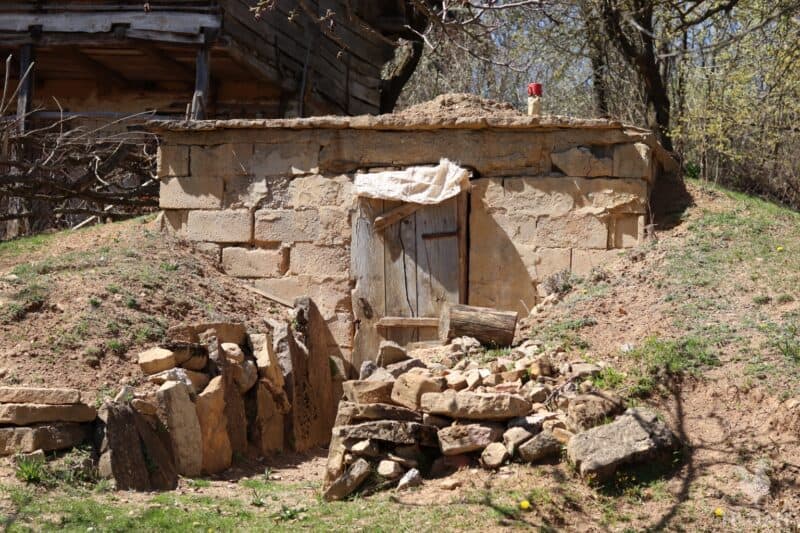
The practice of using these mini root cellars uses the natural cooling properties of the earth that can be found by digging below ground.
This is the same technique that is used by today’s homesteaders when they build their root cellars. The difference is that today, root cellars have progressed to become larger rooms that can store significantly more quantities of foods and produce.
Pemmican
Native American tribes traveled large distances when hunting and foraging. Many tribes led a nomadic existence to protect the natural resources in a particular area. Moving on allowed the natural habitat to recover enabling a return later.
So, to make things easier for them, they needed a method of preserving food in a way that allowed it to be easily transported. Pemmican was invented to meet this demand.
The word “Pemmican” comes from the Cree word “pimikan.” This food is quick and easy to prepare, is nutritious, and lasts for years.
The modern homesteader still finds pemmican a useful way to preserve food. In many ways, the homestead lifestyle is like the Native Americans. Pemmican is ideal as a quick high-energy food source that can be eaten when out on the land.
The fat, which is the main ingredient, has over twice the amount of energy found in similar quantities of protein and carbohydrates. Since it digests slowly, it prevents sugar peaks, and provides energy over many hours.
The principle of pemmican is simple. Pulverized dried meat is added to berries that had also been pulverized. The mixture was held together by rendered fat that used herbs and spices to enhance the flavor. Pemmican is typically the size of a hand so there was no need to portion. It was also easy to pack and carry.
Rendering Fat
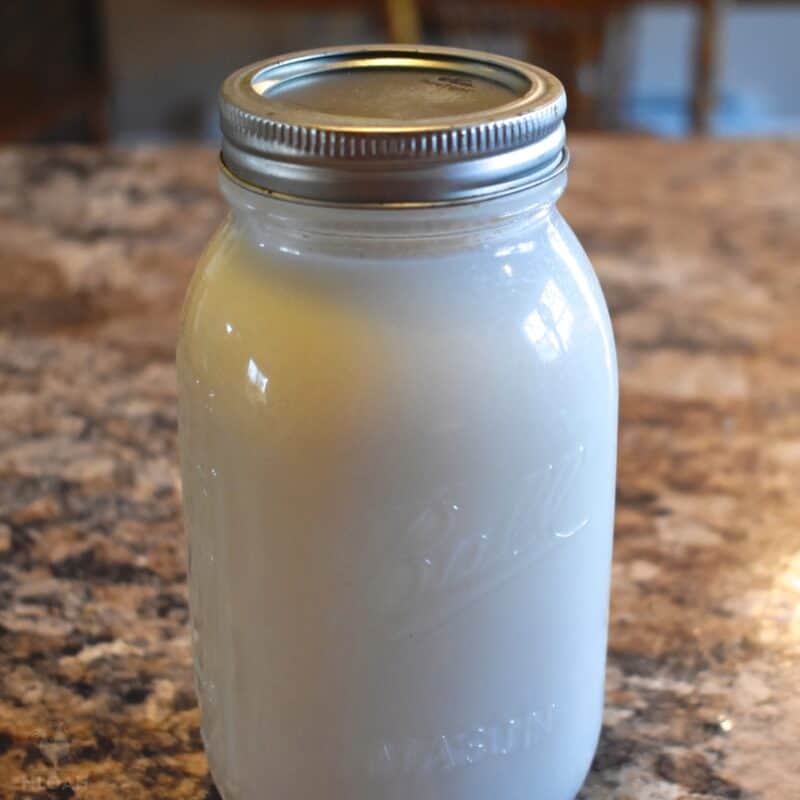
Native American hunting parties would have found themselves having large quantities of meat and fat when they hunted and killed animals. Modern-day homesteaders also find themselves in the same situation either from hunting, or from the animals that they raise.
The fat from an animal is important since it is rich in calories, however, it soon spoils and turns rancid.
To save it, the fat is first cut into small pieces, then added to a heavy pan with a small amount of water. It is cooked over low heat, stirring often for around two or three hours.
The liquid is then strained, allowed to cool, and placed into storage jars for later use. The Native Americans would store the rendered fat in bladders, or large intestines. Storage jars are a more palatable choice.
Kept cool the fat will last for about one year, possibly more.
Rendered fat is an important constituent of Pemmican. It is also useful for flavoring countless other foods.
Give These Methods a Try
We have seen that the life of the Native Americans was based on respect and the use of the natural resources that the land has to offer.
Tribes lived in slightly differing ways; however, their main task was to provide sufficient food. Sounds just like the modern homesteader, doesn’t it?
When food is plentiful, it is necessary to preserve as much of this abundance as possible to be able to survive the times when food is in short supply.
We have seen that there are 6 basic techniques used to preserve different foods:
- Drying
- Smoking
- Freezing
- Root Cellars
- Making Pemmican
- Rendering Fat
Tribes that lived in different areas of the nation had their individual preferences as to how the food was preserved.
Modern-day homesteaders also have their individual preferences as to how food is preserved, and they certainly have more choices in the type of containers that food is stored in. However, the food preservation principles remain the same.
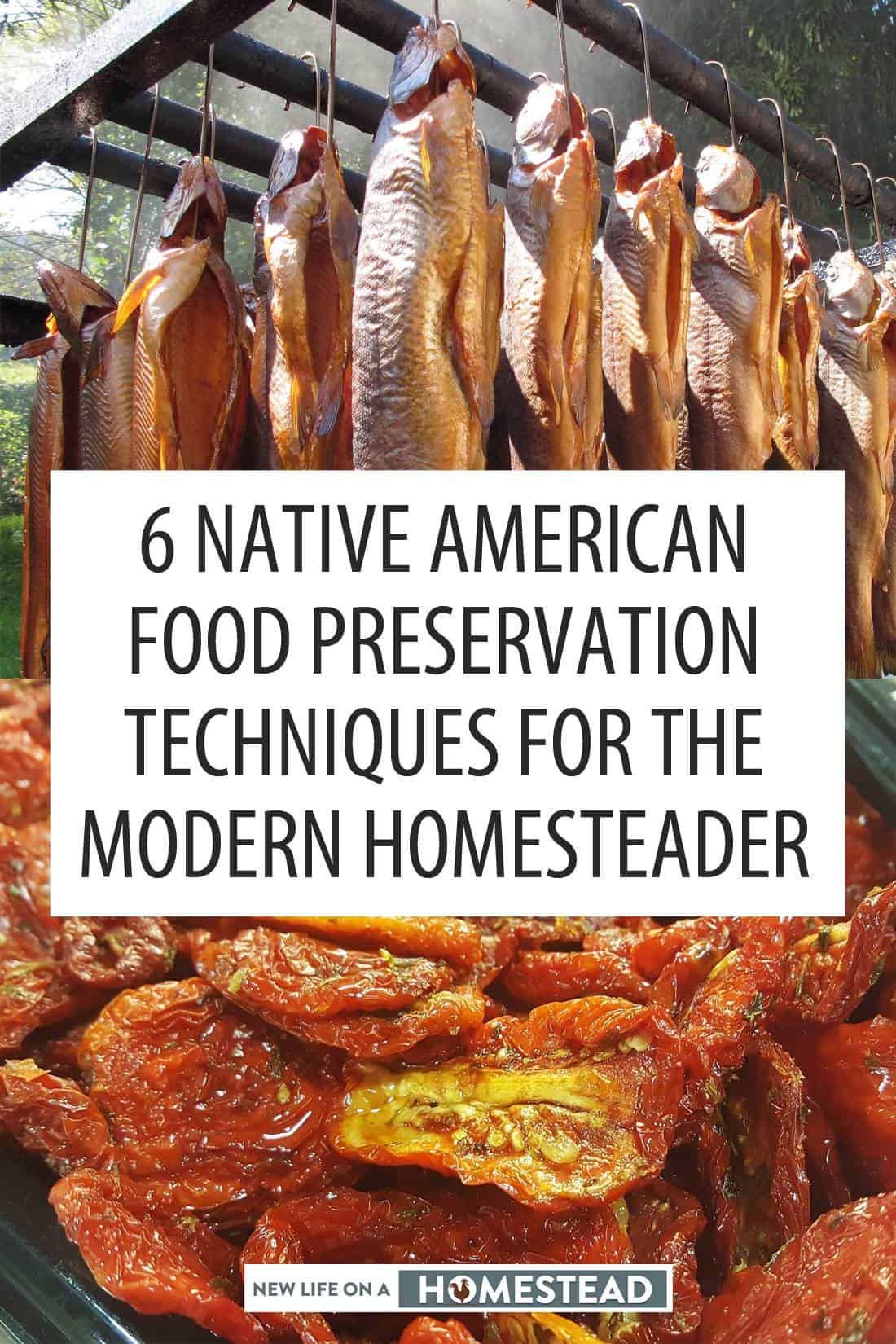

Gordon is a British homesteader established in Spain, growing large amounts of veggies and fruits. He also has a high degree of self-sufficiency as he is procuring his own water, wood, and solar energy.

Teach me I want to learn more. I already dehydrate a lot of fruit which doesn’t last long because I eat it as fast as I make it. Tried to do meat but didn’t like the way is came out. I should let you know that I am a woman single. I want to be able to be self sufficient and no have to depend on the grocery store.